How to Preserve Port Infrastructure for the Future
Corrosion is a significant issue in many port facilities. It is the primary cause of deterioration for structures exposed to aggressive marine environments. Deteriorating piers and wharves are evidenced by concrete cracks, spalls, delaminations, and rust stains. Over time, corrosion-related damage to concrete and steel can become a safety concern and a significant contributor to rising maintenance costs and capital expenditures.
Cost of Corrosion
The direct and indirect cost of corrosion to the U.S. economy is estimated to be as high as 6% of gross domestic product. However, understanding and addressing the cause of corrosion can significantly extend the service life of structures, even under aggressive exposure conditions.
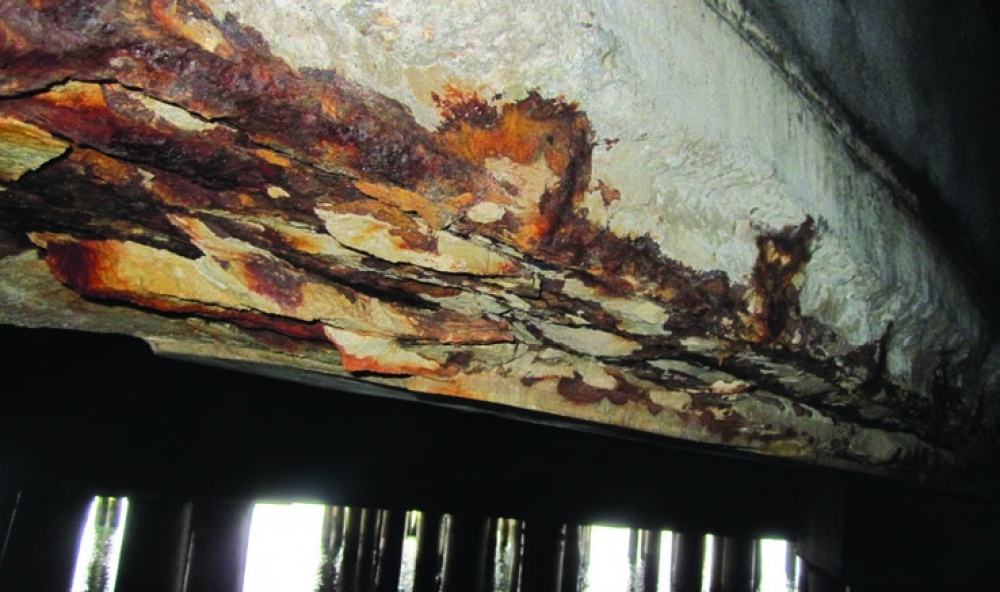
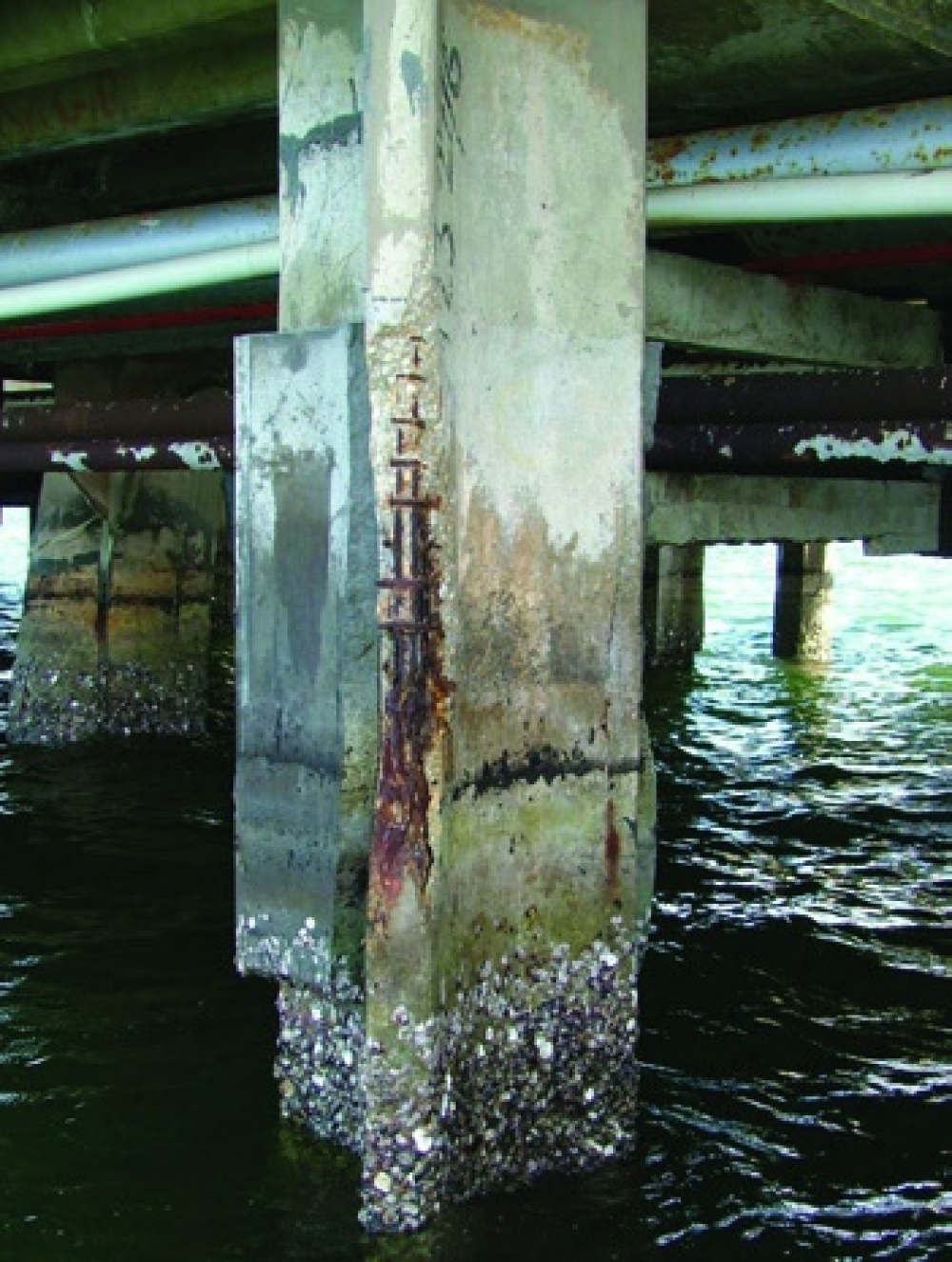
Sustainability in Infrastructure Management
According to the World Economic Forum, the construction industry is the largest global consumer of resources and raw materials (almost 50%). Up to 40% of solid waste is derived from construction and demolition activities. Preserving or reusing existing infrastructure is one of the most sustainable activities that facility management can implement by mitigating pollution, reducing solid waste, and conserving natural resources.
Benefits of Concrete Preservation
For example, it is estimated that if 10,000 cubic yards of concrete is preserved, it avoids production of over 9,000 pounds of nitrous oxides and 5,500 tons carbon dioxide, which is equivalent to annual emissions of about 1,250 people, conserves over 19,000 tons of natural resources that would otherwise be used to produce aggregate, cement, and steel, saves enough potable water to fulfill the daily needs of 2,500 people, prevents over 20,000 tons of rubble being sent to a landfill, and prevents the release of enough heat to boil 30 Olympic-sized swimming pools.
Preserving port infrastructure, rather than demolition and reconstruction, is frequently more economical and can also provide operational benefits due to reduced disruption to port activities. In addition, preservation supports the commitment to sustainability that most port agencies have implemented by establishing environmental or “green port” policies.
Understanding the Cause and Magnitude of the Problem
It is important to understand the cause and magnitude of the corrosion problem to maintain, preserve, and extend the structures' life. Repairs that do not address the cause of corrosion are doomed to fail relatively quickly.
Understanding the cause and extent of corrosion requires a professional condition survey, including concrete and corrosion testing, as appropriate. Typical investigations include visual and delamination surveys, corrosion potential mapping, measuring the depth of concrete cover, and analyzing chloride profiles. In addition to these basic tests, nondestructive testing using technologies such as impact echo, pulse velocity, and ground penetrating radar can estimate the concrete thickness and compressive strength and locate deteriorated and cracked concrete.
Similar technologies such as pulse echo, parallel seismic, and magnetic gradiometer testing can be used to estimate the length of concrete, steel, and timber piles. Once the cause of the corrosion and concrete deterioration has been determined, the owner’s budgetary and service life needs are incorporated into a final design and implementation of an appropriate preservation program.
Cathodic Protection
Cathodic protection can be an essential tool for corroding structures with a long service life expectation. Many port engineers are familiar with cathodic protection, such as galvanic anode protection of steel sheet piles. Similar cathodic protection technologies can protect reinforced concrete structures like piles, pile caps, beams, and concrete decks. These systems are generally grouped into three categories: galvanic protection, impressed current cathodic protection, and more recently developed two-stage fusion systems that combine impressed current and galvanic protection techniques to reduce cathodic protection monitoring and maintenance requirements.
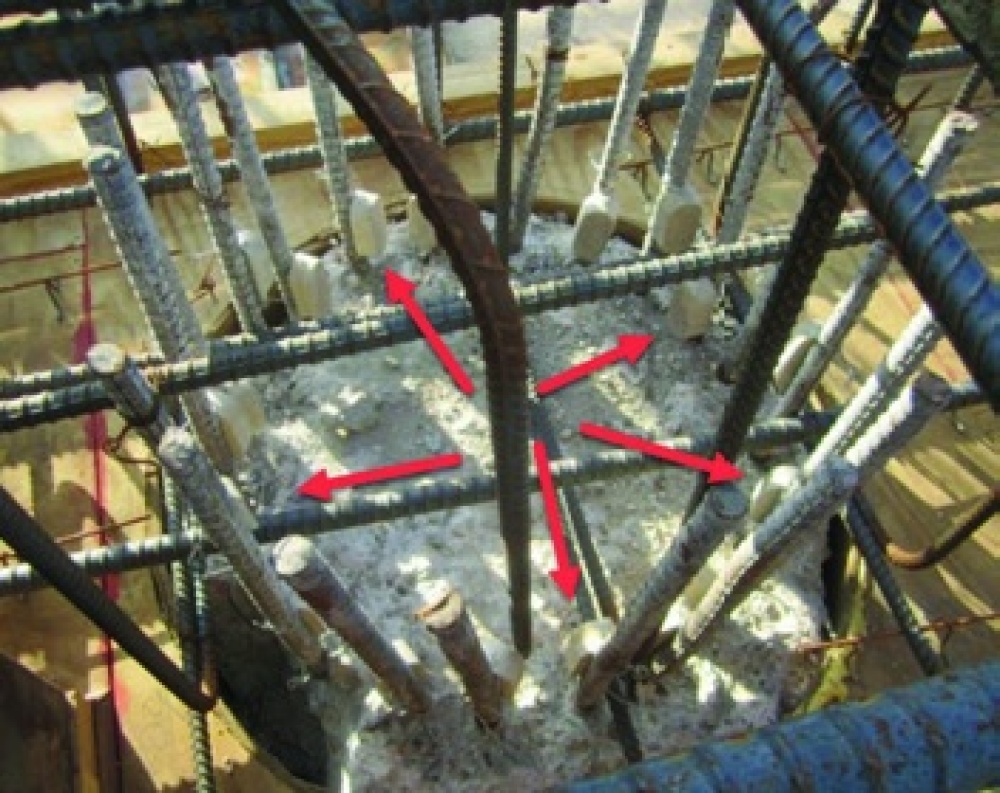
Cathodic protection techniques can be targeted to protect “hotspots” or areas with high corrosion risk. For example, when wharves are modified or expanded to accommodate larger vessels, interfaces between the existing chloride-contaminated concrete and the new concrete in the expanded portion of the structure are at high corrosion risk. This risk can be mitigated using embedded galvanic anodes of different sizes and shapes.
Cathodic protection technologies are also utilized to rehabilitate structures to extend the service life. Impressed current cathodic protection provides a high level of control and long-term protection. External power supplies, such as a transformer-rectifier, are required to operate impressed current systems. The electrical systems also require a commitment to long maintenance over time.
Several projects can be cited as examples of successful implementation of cathodic protection. Impressed current cathodic protection protected a South American filter plant and shipping facility. Widespread chloride contamination was causing significant corrosion-related damage in tanks, support structures, and the ship loading pier. Various types of impressed current cathodic protection were used to protect these structures.
In another case, an inland freshwater shipping berth exposed to potash (potassium chloride) was experiencing widespread corrosion. The corrosion evaluation indicated high chloride levels in the concrete and significant concrete deterioration. Service life modeling was used to estimate the remaining useful service life and to evaluate the benefit of cathodic protection in addition to traditional concrete repairs. Galvanic cathodic protection was determined to be an economical choice to preserve the structure for another 30 years.
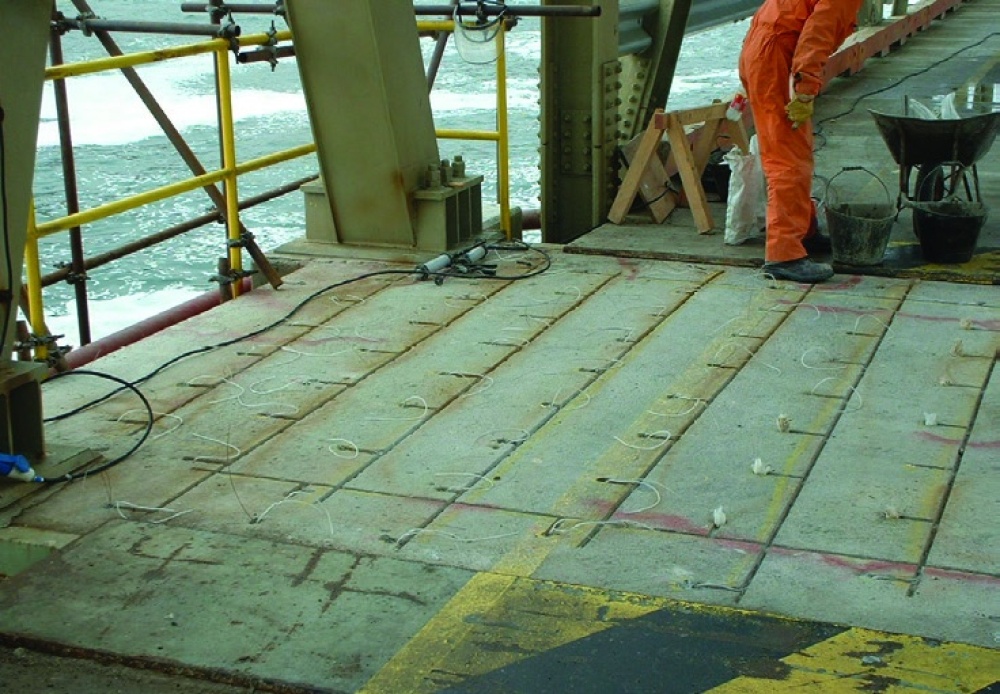
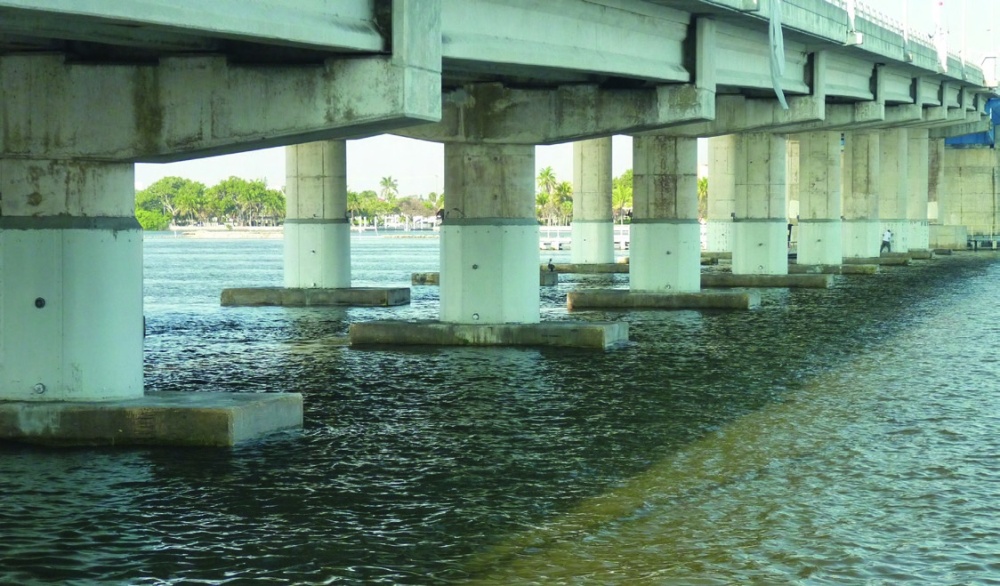
Over 56,000 sq ft of activated arc spray zinc anode was applied to the structure's surface and connected to the reinforcing steel to protect the berth beams, girders, and conveyor legs. A humectant activator was used for a higher level of cathodic protection current and improved long-term bond. Type 2A discrete embedded galvanic anodes were used to protect the top side of exposed beams. All concrete repairs not protected by the arc spray zinc utilized Type 1A discrete galvanic anodes.
Column and Pile Protection
Columns and piles are particularly susceptible to corrosion of concrete and steel structures caused by repeated wetting and drying in the tidal zone and atmospheric chloride exposure. Impressed current and galvanic pile jackets are excellent tools to provide cathodic protection to the areas of the structure most susceptible to corrosion. Proper selection of a galvanic jacket depends upon the water type (salt water, brackish water, or freshwater) as well as the elevation of the pile to be protected, i.e., how far above the high tide zone.
Typical galvanic cathodic protection jackets in seawater use zinc anodes in the form of expanded mesh or fabric-covered zinc castings inside an FRP or PVC jacket. A submerged bulk zinc anode is commonly used with the cathodic protection jacket to provide underwater pile protection. Self-activated anodes are a more recent development that allows galvanic jackets to be used in areas without exposure to salt water, even in dryland applications.
Summary
Preservation of infrastructure is a vital asset management tool for port facilities.
Extending the life or reusing existing structures is a sustainable practice with economic and environmental benefits. Understanding the cause of the magnitude of corrosion problems is an essential first step in the preservation process.
In addition to traditional concrete repair practices, corrosion mitigation technologies such as cathodic protection can be used in targeted areas of high corrosion risk or for general protection over large areas. Many types of impressed current and galvanic cathodic protection technologies can be successfully implemented to meet service life and budgetary requirements.
This article is based on the presentation given by Chris Ball at the Port & Terminal Technology Conference & Exhibition 2018, held in Charleston, South Carolina, in April 2018.